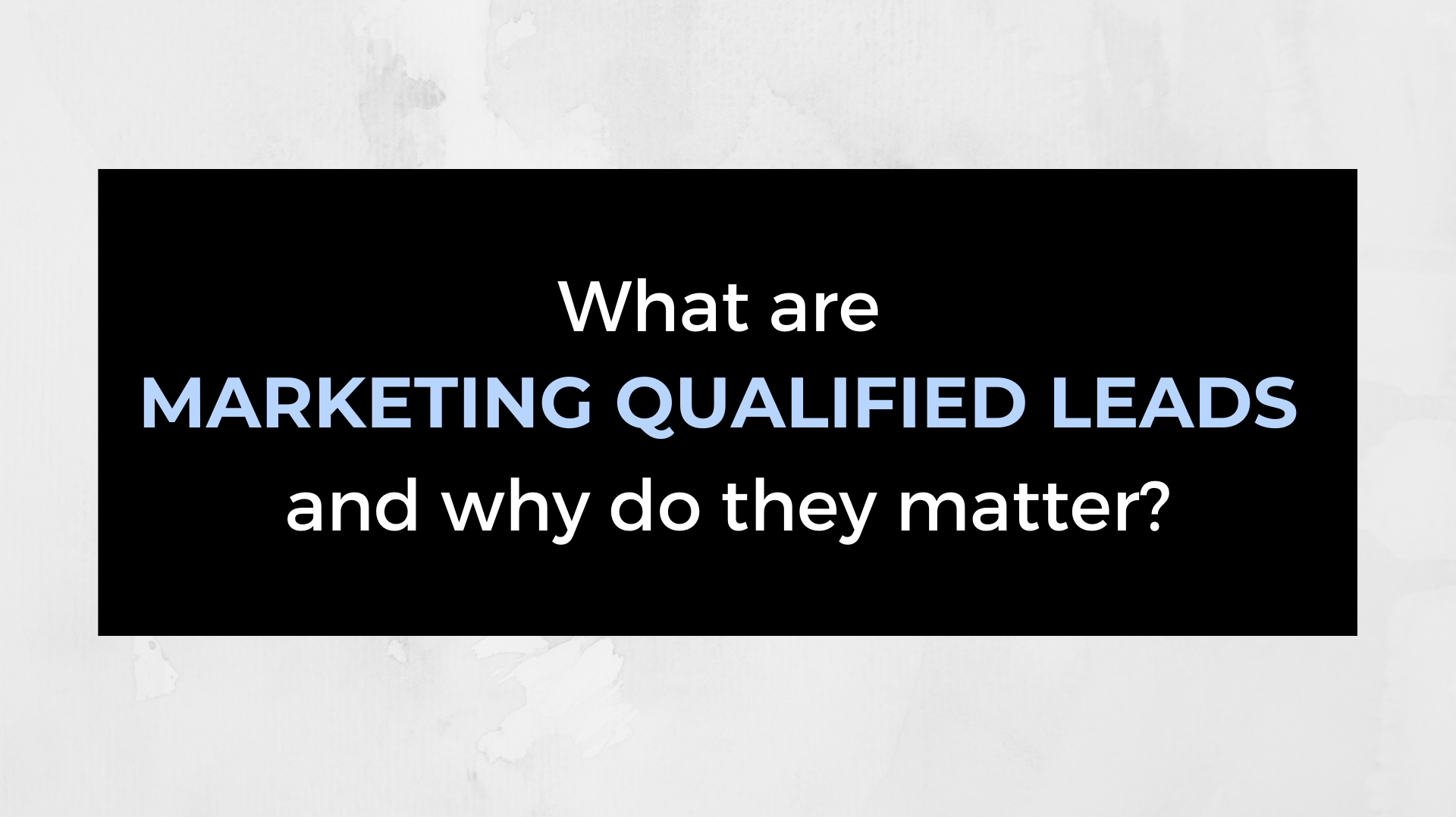
Generating leads is always a hot topic at the leadership table for B2B professional service firms when it comes to marketing. Whether you’re a partner at an accounting firm, law firm, insurance firm, executive search firm, investment firm, etc. there is a constant focus on generating new business. That means that the marketing department is tasked with “generating leads”.
A Common Pitfall: Focused on Generating Leads instead of Marketing Qualified Leads & Converted Revenue
As a Partner or leader in a B2B professional service firm you likely aren’t a marketer, nor do you pretend to be. That’s why you’ve hired expert marketers that you can trust to deliver leads and new business.
The issue with a lot of marketers, whether in-house or external contractors, is that they focus their reporting metrics on leads that they have generated – i.e. we did a, b, and c marketing activities this month and generated 100 new leads in our pipeline.
In my mind, leads are a vanity metric. It is similar to counting “likes” on your instagram posts, what does it actually mean in terms of accomplishing your business objectives?
In addition, common reporting can be focused on the cost per acquisition, or in other terms what it costs the company to generate 1 lead. There is then a focus put into lowering the cost per acquisition.
A number of marketers in B2B professional service firms showcase the number of leads they are generating and how they’ve been able to optimize their budget to get better performance out of their campaigns and a lower cost per lead. As a partner in your firm, you may think they are doing a great job and are very pleased with your marketing efforts to date.
Qualifying Leads: MQLs
Leads on their own should not count as an important metric in your reporting. Qualified leads are a much more relevant metric. There are two types of qualified leads typically, 1. Marketing Qualified Leads (MQLs) and 2. Sales Qualified Leads (SQLs). I will focus on MQLs in this blog.
HubSpot defines a MQL as a lead who has been deemed more likely to become a customer compared to other leads.
By having a process for marketing to qualify leads to pass along to either a Business Development professional, Sales or Partner in the company you can create a much more effective and efficient operation.
For example, marketing will only pass along leads that they deem worthy of a follow-up or someone to pursue. This qualification of MQLs can be done through looking at traits of the leads (company size, job title, decision making capabilities, industry, etc.). Once you are able to identify the types of clients you’d like to attract you can begin reporting on MQLs, which will give more relevant information in marketing reports. I.e. We did a, b and c marketing activities this month and generated 20 MQLs in our pipeline. Our cost per MQL is $x.
Focus on What is Actually Driving Revenues
Take it one step further and put an emphasis on evaluating your MQLs and understanding what is driving actual client acquisition and revenues for your firm.
Optimize Your Marketing Budgets to Drive Real Results
By focusing on this type of reporting from a campaign perspective, you can identify what activities, content, social media, advertising, partnerships, etc. are generating the types of leads that you want as a business as well as converting into real revenue. You can then evaluate your marketing efforts more clearly to drive real results that align with your business objectives.
Example: Google Adwords vs. LinkedIn Ads
Hypothetically, you might uncover that the $3000/month you are spending on Google Adwords that you thought was successful because you drove 300 leads/month ($10/lead) perhaps isn’t so successful.
Compare that with the $1000/month you are spending on LinkedIn Ads and only receiving 50 leads/month ($20/lead – 2x higher cost than your Google Adwords spend).
With this simple calculation you might come to the conclusion to move more budget to Google Adwords because they are performing better than your LinkedIn Ads.
However with the added focus on driving MQLs you may come to the realization that the opposite is true.
If marketing can qualify 10 leads/month from Google Adwords, you’d conclude a cost of $300/MQL. If marketing can qualify 10 leads/month from LinkedIn Ads as well, you’d conclude a cost of $100/MQL (3 times less expensive than Google Adwords).
In this example you would use this data to optimize your campaign spend to move some of your Google Adwords budget to LinkedIn Ads to drive a lower cost per MQL on your overall marketing activities.
What MQLs are Converting to Revenue?
Through your reporting you may also uncover that the MQLs from Google Adwords over the last 6 months have driven a total of $0 in sales. Contrast that with the MQLs from LinkedIn Ads that have actually driven $300,000 in revenues.
Through this deep analysis focused on MQLs and actual revenue, you can make data-driven decisions to optimize your marketing spend as a firm. In this example, you may drastically reduce your Google Adwords spend, or even stop using Google Adwords and focus your budget solely on activities that are driving true revenue for your firm.
Final Thoughts
It is very important to ensure that your marketing efforts are optimized to reach your business objectives in order to continue the growth of your B2B professional service firm. Ensure that the information you receive in your marketing reports are relevant and allow you to make data-driven decisions about how to move forward to scale your business.
